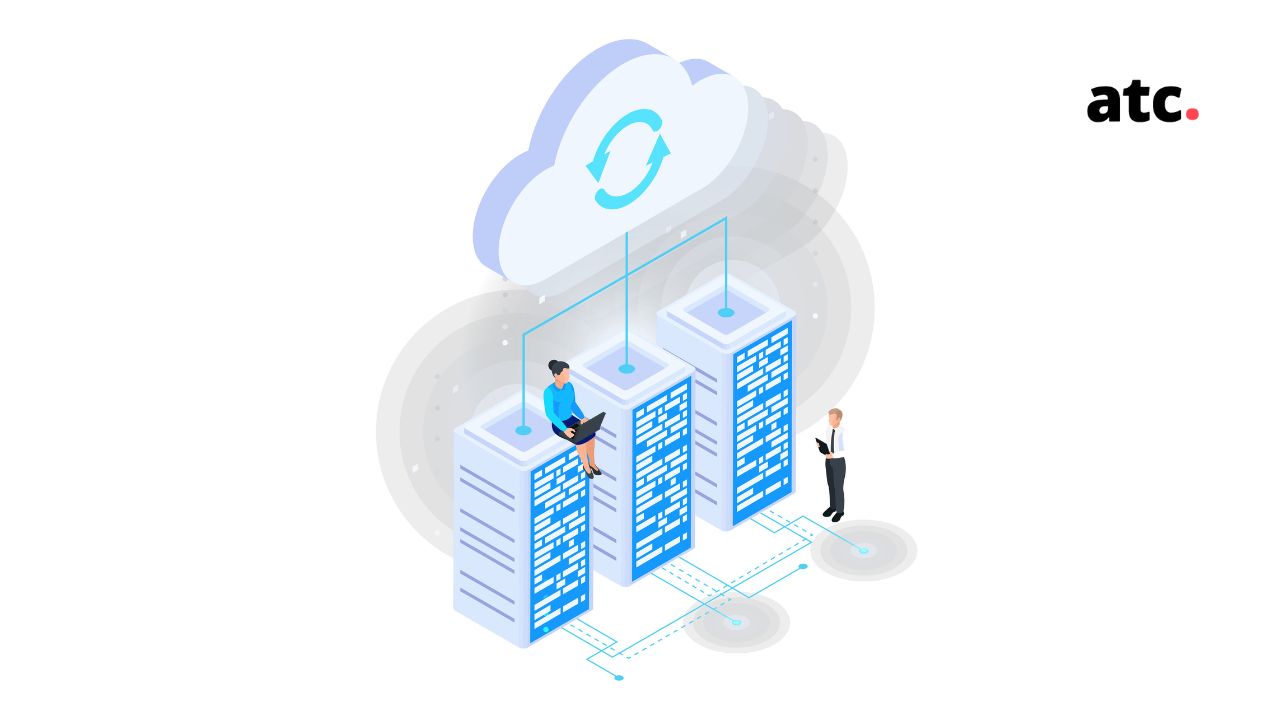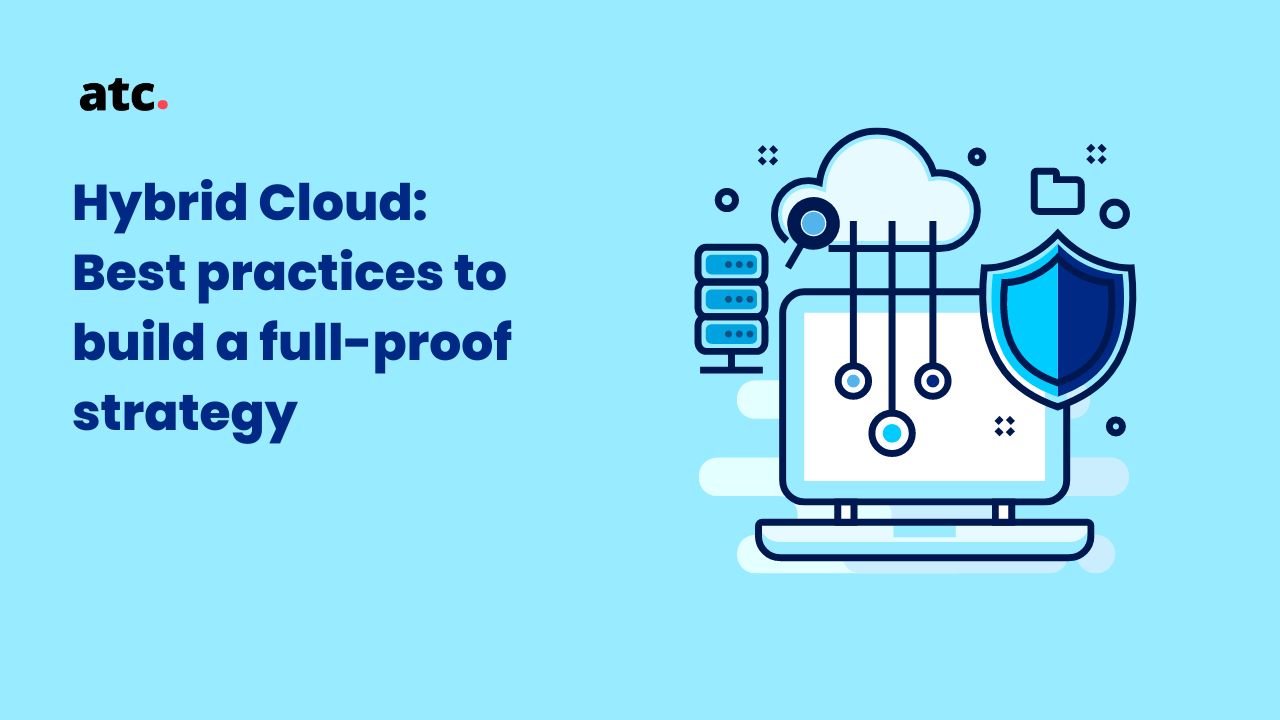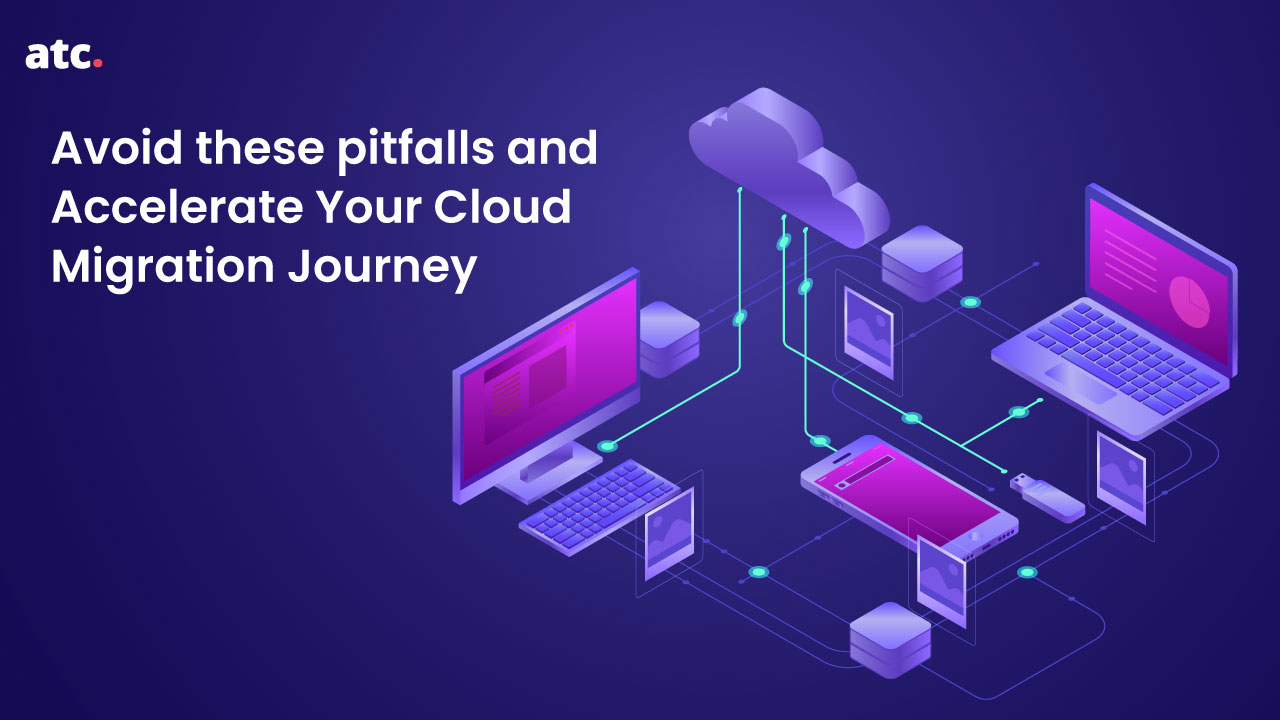Subscribe to the blog
At times, navigating through the world of cloud computing may seem like playing a board game. The right move rewards you, but the wrong move pulls you back.
With 85% of CEOs planning to increase investment in digital capabilities, this is the time for you to make the right moves and secure your business from uncertainties.
But for that to happen, you need a modern ecosystem that supports your needs and fosters innovation. Cloud infrastructure can help you create that ecosystem.
In this guide, we will discuss everything on cloud computing infrastructure - their types, benefits, and requirements so you can enhance your processes through data.
Before We Begin - Let’s Understand Cloud Infrastructure First!
Cloud infrastructure is a virtual infrastructure accessible via the internet that provides businesses with storage, server, and networking capabilities. In simpler words, cloud infrastructure has all the elements that you need to enable cloud computing. This next-generation infrastructure helps you run applications, manage workloads and store data from anywhere in the world. Today, 94% of enterprises already use a cloud service to power their processes and manage workloads.
Top 3 Cloud Infrastructure Types You Should Know!
Now that we have some context, let’s explore the different cloud infrastructure types!
- Public Cloud Infrastructure
When public cloud infrastructure was introduced in the 1990s, it brought on-demand capabilities that every enterprise dreamt of having.
In a nutshell, the public cloud is a cloud infrastructure where third-party service providers offer you on-demand services over the internet. This can include enterprise-grade infrastructure, ready-to-use software applications, and more. Most public clouds operate on a monthly or pay-as-you-go model, thereby eliminating the need for you to host or maintain the infrastructure.
Using a public cloud can offer you the following benefits:
- Plug-and-play model: Since there is no need to maintain infrastructure, public clouds provide you with the flexibility to connect from anywhere. It also offers high cost-saving opportunities with the pay-as-you-go model.
- Scalability: Enterprises can scale their storage and networking capabilities on public clouds anytime. They have access to unlimited scalability at their disposal.
- Robust security: Public clouds are run by third-party vendors, having a vast network of servers to protect against failures.
So What’s the Catch?
Although the enterprise spending on public clouds reached a staggering $332.3 billion in 2021, and the benefits are apparent, it is vital to look at the bigger picture. While this cloud infrastructure keeps your costs down and offers you many digital capabilities, the infrastructure isn’t tailored to your business needs. Another reason most enterprises with growing IT needs shift towards a private or hybrid cloud strategy is that they don’t find it cost-effective to stay on the public cloud.
In the end, it all depends on your priorities. For instance, if you are a start-up and your biggest goal is to save money and power your business with a suite of tools, then the public cloud is an ideal solution.
- Private Cloud Infrastructure
Here’s an analogy that will help you understand the private cloud better - Using the public cloud is like living in a rented space inside a cottage with limited options to customize the setting. On the flip side, a private cloud is like owning the entire space and making changes you deem necessary.
In professional terms, a private cloud has computing resources that only your internal team has exclusive access to. Also, you are in charge of hosting and maintaining it. It gives you all the benefits of a public cloud with added control and customization capabilities.
Let’s explore the benefits of using private cloud infrastructure for your organization!
- Higher level of security and privacy: With a private cloud infrastructure, your sensitive data information is not accessible to third-party vendors. Besides that, you can also incorporate additional security features to safeguard your data against breaches.
- Efficiency and control: As your workflows are in a privately hosted environment, it gives you better control over data, allowing you to intervene as and when you like. You can also customize storage and networking capabilities that meet your business needs.
- Moving workloads: By building a private cloud infrastructure, an organization gives itself the flexibility to manage workloads easily and move them to a public cloud whenever required. Many companies also choose the private cloud because they are easier to meet regulatory requirements.
Here’s the Catch!
While the public cloud works in a multi-tenant environment and the private cloud works in a single-tenant environment, you need to consider the costs associated with building and maintaining the infrastructure. From purchasing and installing the new hardware to adding capabilities, you need an internal IT team to manage things from scratch.
- Hybrid Cloud Infrastructure
There has been a widespread discussion about hybrid cloud, and for a good reason. Companies have invested millions of dollars in building on-premise cloud computing infrastructure or have relied on the public cloud for decades. The thing is that both these strategies, somewhere down the line, have shortcomings.
And this is how hybrid cloud infrastructure came into the picture.
A hybrid cloud approach combines public and private cloud components to deploy applications or streamline workflows. The premise of using this approach is to support digital transformation. With this hybrid approach, you can change directions and gain agility for a competitive advantage.
Below are some of the most distinct advantages of using a hybrid cloud infrastructure:
- Dynamic workloads: You can manage your workloads effectively with a hybrid approach. For instance, you can move sensitive workloads to a private cloud and leave dynamic workloads in the public cloud.
- Cost-optimal and flexible: A unified cloud environment helps you utilize your resources optimally without increasing data center expenses and enables development teams to modernize applications faster. You can plan for your future needs today by deciding which cloud environment works best for you.
- Business acceleration: For creating the best customer experience, you need an infrastructure that fosters innovation at a rapid pace. With a hybrid cloud, this is possible.
Is Hybrid Cloud Really the Best of Both Worlds?
On paper, yes, the hybrid cloud truly offers enterprises the best of both worlds. But there is a lot that you need to consider.
In an article by Forbes, cloud experts have stated that while hybrid landscapes are crucial for all virtual companies, it requires significant investments and the right talent to optimize ROI. The approach needs a lot of heavy lifting. So before integrating it into your company, it is crucial to understand how it can deliver new value to the business.
Which Cloud Infrastructure Approach Are You Planning to Adopt For Your Business?
Your digital footprint is growing every minute. And this digital footprint has a trail of data that you can actively analyze and use to grow your business. But without an appropriate cloud computing infrastructure, you cannot convert this data into valuable insights.
Hopefully, the classifications above can help you decide on adopting the right cloud infrastructure for your business. Also, if you need help accelerating your cloud journey, we can help you!
From cloud migration to optimization and analytics, our experienced team will mitigate every constraint and help you boost your operational efficiency. Contact us today to learn more!




